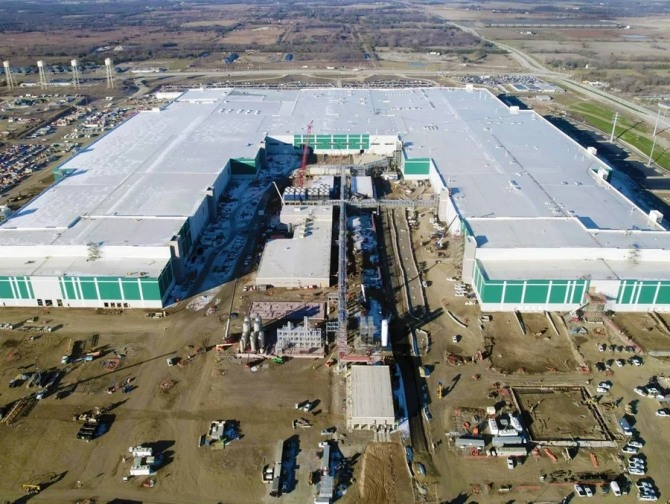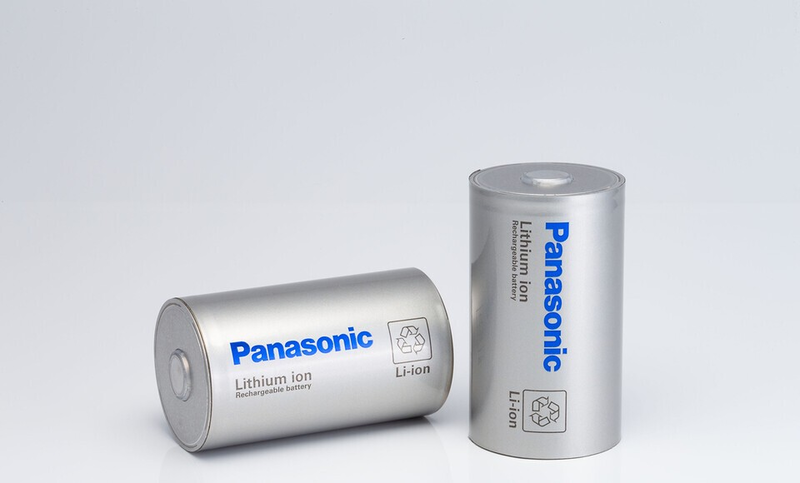“Japan’s Bid to Reclaim Battery Supremacy” — Panasonic Ignites Battery Big Bang in Kansas
Input
Modified
Second North American base follows Nevada expansion 600 million cells annually; 73GWh production system in place Japan’s legacy tech challenges Korean and Chinese battery hegemony

Japan’s leading battery manufacturer and the world’s fourth-largest, Panasonic, is significantly scaling up its U.S. manufacturing footprint. Despite the electric vehicle (EV) and battery market entering a temporary slowdown phase known as the "chasm," Panasonic’s aggressive investment reflects its ambition to seize post-chasm market leadership. Once the global frontrunner thanks to its pioneering development of cylindrical lithium-ion batteries, the company has since ceded dominance in large-format EV batteries to South Korean and Chinese rivals.
One of the World’s Largest EV Battery Plants Now Operational
On July 14, Panasonic officially opened its new cylindrical lithium-ion battery facility in De Soto, Kansas, spanning 4.7 million square feet. This $4 billion investment marks the largest project in Panasonic’s 107-year history. Built on a 300-acre site, the plant is now considered one of the largest EV battery factories in North America. Panasonic aims to produce 2170-format (21mm diameter, 70mm height) battery cells with an annual capacity target of 32 gigawatt-hours (GWh)—enough to power roughly 500,000 EVs at full operation.
The Kansas factory is a cornerstone of Panasonic Energy’s regional manufacturing strategy. Since 2017, the company has operated a major battery plant in Nevada with an annual output capacity of 41GWh. Employing over 4,000 workers, the Nevada site has delivered more than 11 billion cells to date. When operating at full capacity, the two North American plants combined will produce approximately 73GWh annually.
Kazuo Tadanobu, CEO of Panasonic Energy, called the Kansas facility “a critical milestone in our journey to expand advanced battery manufacturing in the U.S.” He added that “with robust support from local partners and the state of Kansas, we are accelerating electrification, strengthening local supply chains, and cultivating the next generation of battery talent.”
Focus on Safety, Sustainability, and Technological Edge
The Kansas plant is designed with labor-saving production lines expected to deliver roughly 20% higher productivity compared to the Nevada facility. Panasonic also plans to increase cell capacity by around 5% in the near future through the use of advanced materials. The company’s lithium-ion cells boast one of the industry’s highest volumetric energy densities at 800Wh/L.
Panasonic’s batteries are also recognized for their outstanding safety record. With no reported vehicle recalls related to its batteries, the company has supplied around 19 billion cells as of Q1 2025, powering approximately 3.7 million EVs. Allan Swan, President and COO of Panasonic Energy North America, stated, “We will continue to succeed if we grow our business in a way that is sustainable for our employees, for our industry, and for the planet.”
The Kansas facility is expected to deliver significant economic impact. At peak operation, it will directly create up to 4,000 jobs, with an additional 8,000 indirect positions projected across the supplier and related sectors. Panasonic is also forging long-term industry-academia partnerships, including with the University of Kansas, to foster innovation and develop specialized talent.

Mass Production of Next-Gen ‘4680’ Batteries Imminent
Industry analysts view Panasonic’s expansion in the U.S. as a strategic response to intensifying competition in the cylindrical 4680-format battery space (46mm diameter, 80mm height). Compared to the 2170 format, the 4680 cell delivers up to five times the capacity and six times the output. Although prismatic and pouch cells have dominated the EV market, Tesla's launch of its 4680-equipped Cybertruck in late 2023 has spurred renewed demand for cylindrical cells. While Tesla has attempted to produce 4680 cells in-house, low yield rates have forced it to seek external suppliers. For Panasonic, this presents a critical window to reassert market leadership as cylindrical cell demand surges over the next few years.
Currently, Panasonic and LG Energy Solution are considered technological frontrunners in 4680 development. Both companies ramped up R&D following Tesla’s announcement of commercial plans for the 4680 format. As Tesla’s key battery supplier, Panasonic directly competes with LG Energy Solution, which is expanding its presence in Tesla’s supply chain through diversification efforts. While Panasonic maintains a focused client base centered around Tesla and cylindrical cells, LG Energy Solution boasts a broader portfolio—spanning prismatic, pouch, and cylindrical formats—and has secured diversified clients through joint ventures with local automakers such as General Motors.
Market expectations suggest the 4680 segment will see rapid expansion. Tesla first disclosed its development roadmap for the 4680 in 2020, and global automakers including BMW, GM, and Volvo are now evaluating or adopting the format. Chinese battery makers such as CATL, BYD, and EVE Energy have also joined the race to commercialize the 4680. According to market research firm SNE Research, global demand for 4680 batteries is expected to surge from 10GWh in 2024 to 155GWh by 2025, and further to 650GWh by 2030. Industry insiders cite the superior economics of the 4680 format as a key draw, noting that “a single 4680 can deliver the same output as multiple 2170 cells, significantly improving production efficiency.” Reduced production time and lower material input—such as casing—make it cost-effective.
Currently, LG Energy Solution commands a clear lead in market share. In 2024, LG Energy Solution held 12.4% of the global EV battery market, nearly three times Panasonic’s 4.3%. Even excluding China, LG still outpaced Panasonic by a similar margin—26.2% to 9.7%. While the gap between the two stood at 2:1 in 2023, it has since widened further.
Nevertheless, industry experts caution against discounting Panasonic’s potential. Japan is often regarded as the “birthplace of batteries,” having pioneered key innovations such as NCM (nickel-cobalt-manganese) chemistries and graphite anode materials. Japan has consistently led in battery technology, a fact underscored by Tesla’s long-standing reliance on Panasonic as its primary supplier. Although Japan’s current market share is modest, analysts warn it would be unwise to overlook the country’s enduring technological prowess.





















